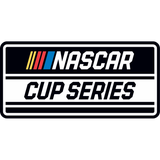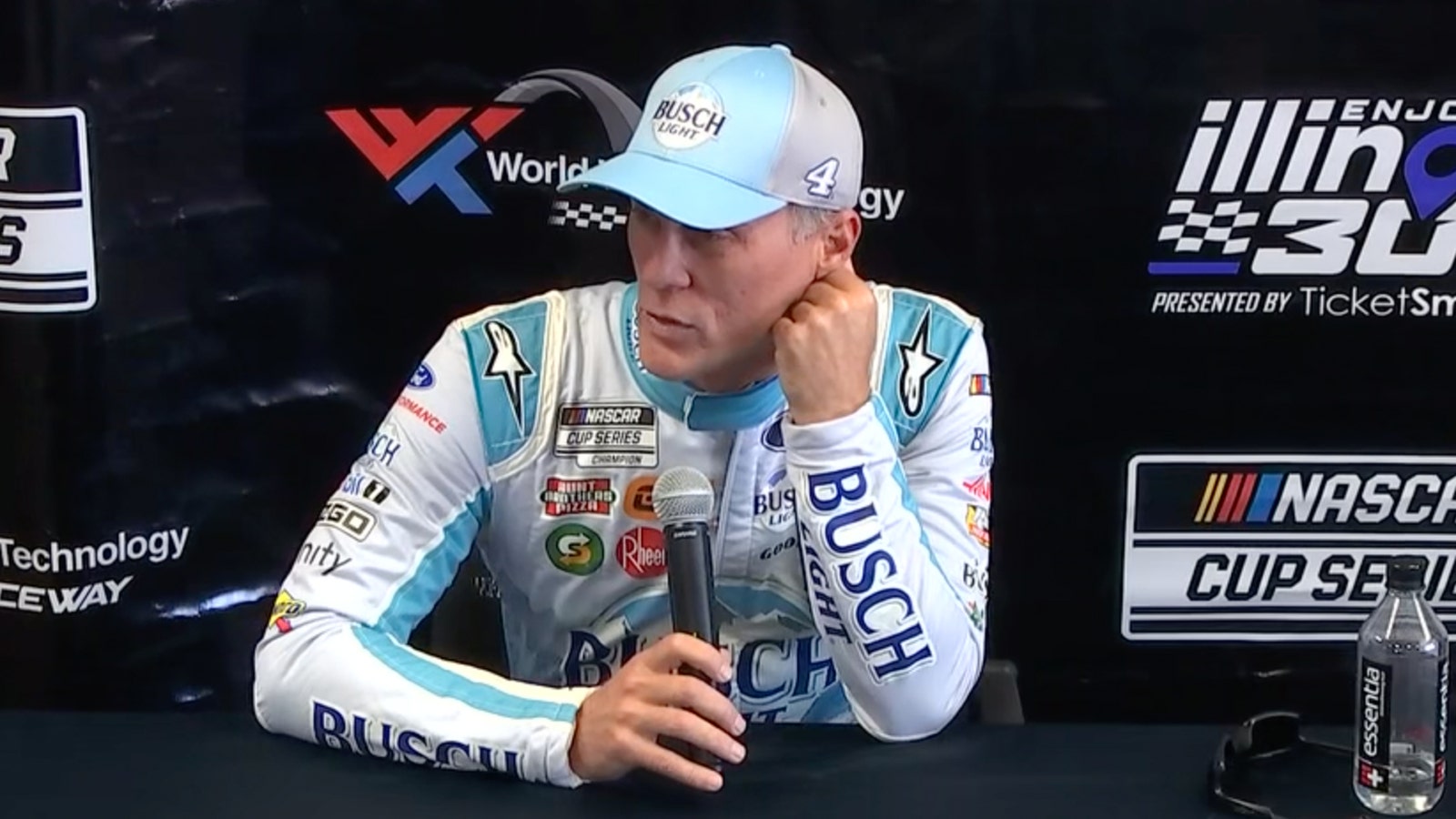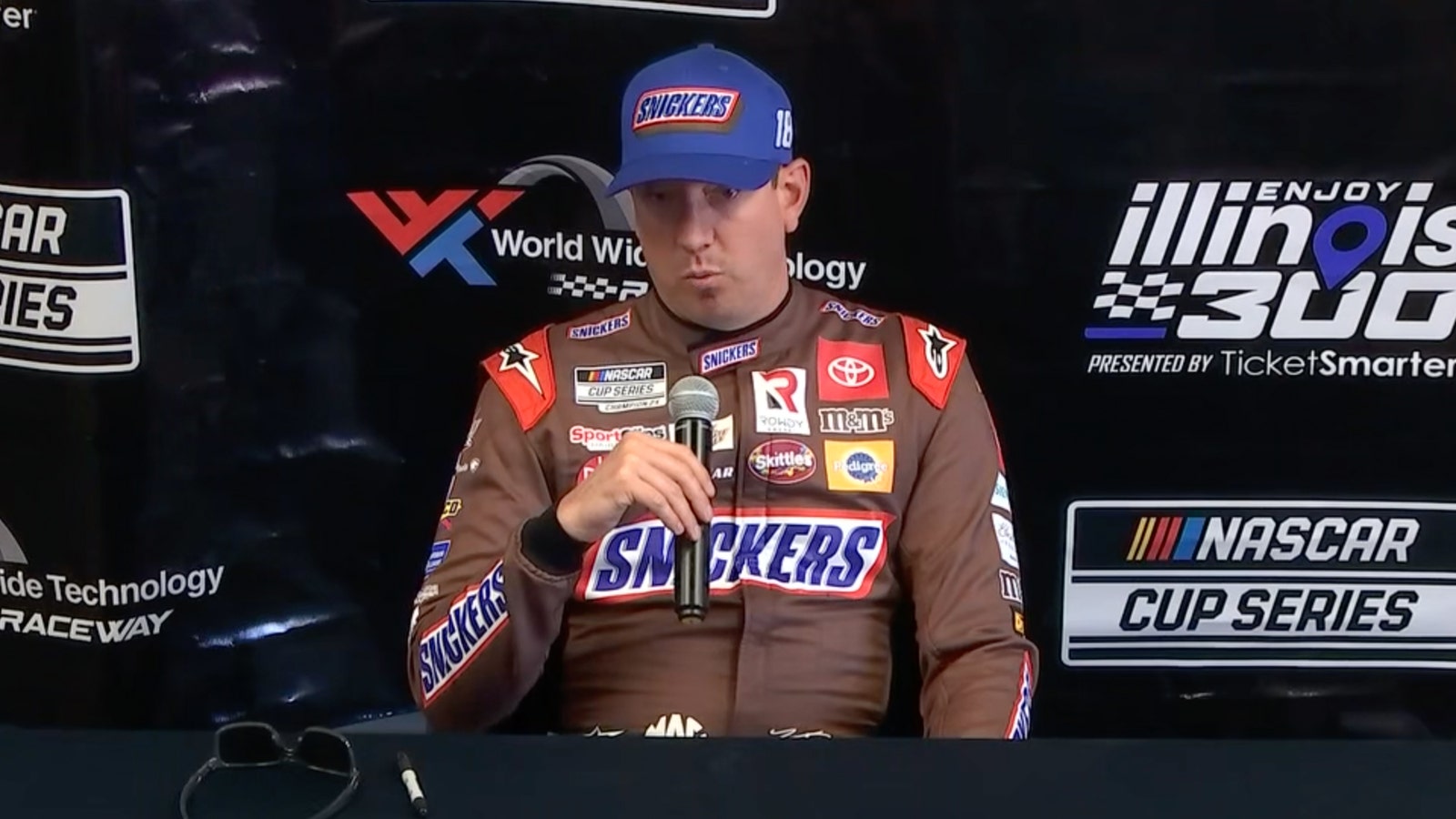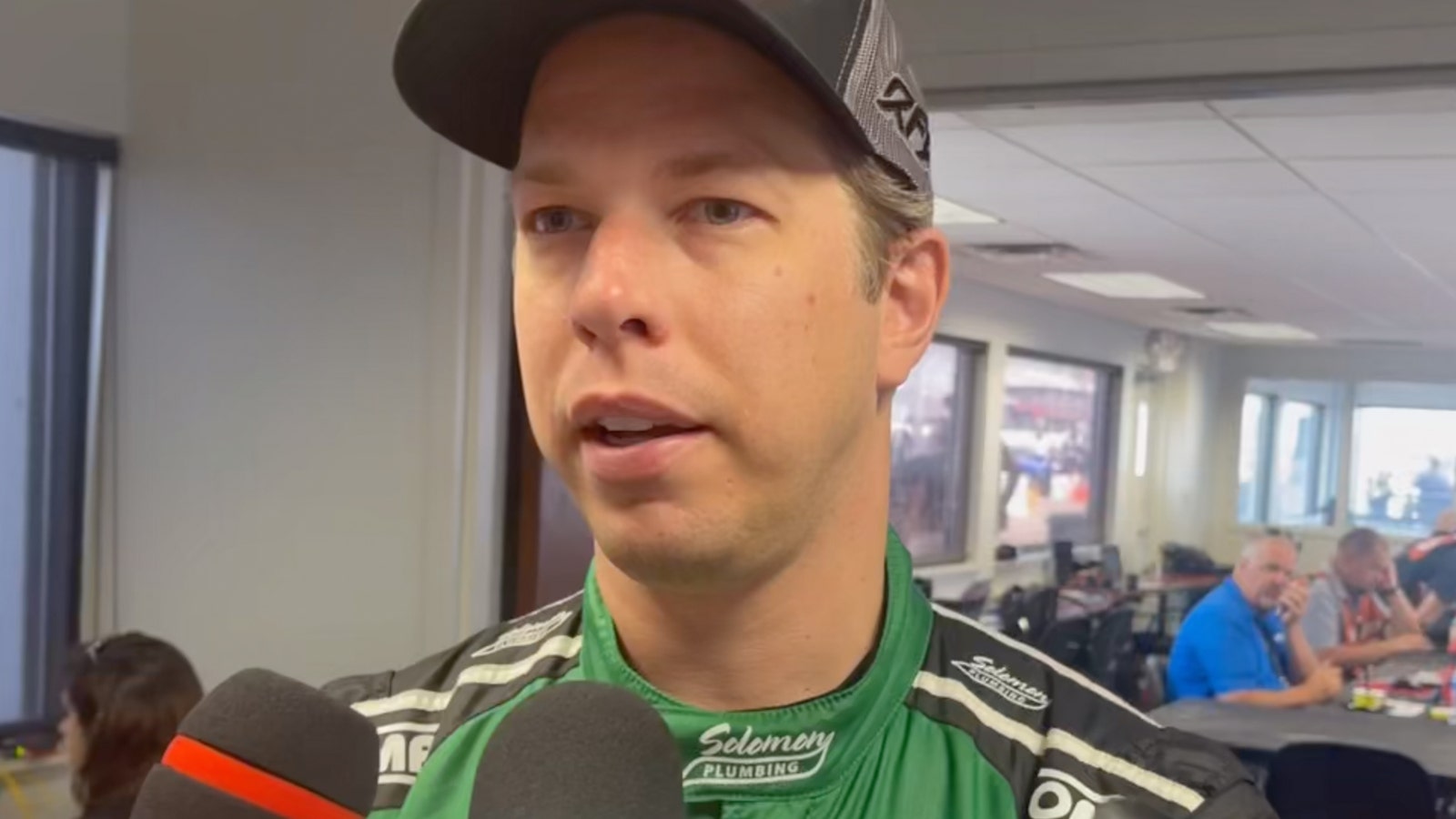
NASCAR drivers still learning Next Gen cars at midseason
By Bob Pockrass
FOX Sports NASCAR Writer
Four months into the Next Gen era of the NASCAR Cup Series, the question isn’t so much what teams have learned as it is what more they need to learn.
The one thing they have learned: The Next Gen car is difficult to predict. And that’s not necessarily a bad thing.
Drivers are still learning how the cars will race from track to track.
"I would have bet a million dollars ... that Charlotte was going to be horrendous," former Cup champion Kevin Harvick said. "And then all of a sudden, we're running up on a part of the racetrack that we haven't run in five or six years.
"And so I've quit trying to guess what my car is going to drive like, what race is going to be good, what race is going to be bad because there is no rhyme or reason to it. And I don't think that's by fault. I think that's just because there's just so many new variables that we all just don't completely understand, and it's kind of trial and error."
Kevin Harvick on the Next Gen car so far
Maybe because the cars are still a little snappy once they get loose, saving them from spinning and crashing is more difficult, which has created more cautions and restarts. That said, while it can be easier to make a mistake, it seems that there are times when a driver needs someone to make a mistake to make a pass, especially on the short tracks.
"Passing [in] traffic — this car is worse in traffic than the previous car," Kyle Busch said. "I feel like all the underbody stuff is not at all what we anticipated it to be. The cars drive fine. They're good.
"The pleasant part of it is they drive good by themselves when you have full air. But if what we were striving to do was to better cars and traffic, we did not do that. So that's kind of been, I feel like, the biggest struggle in myself and around our team."
Kyle Busch on the Next Gen car so far
Granted, there have been drivers who have not struggled as much as Busch — Ryan Blaney recently was able to come from the back of the field to the front at Gateway. He said he needed a really fast car (he might have had the fastest car in the field) to do it.
To help with passing at short tracks, NASCAR tested Tuesday and Wednesday at Martinsville Speedway with a plastic underbody and no extensions on the rear diffuser — the setup that was used for the Bristol dirt track. Busch, Austin Cindric and Tyler Reddick participated in that test, in which Goodyear also tested several tire combinations, hoping to give drivers more ability to pass. Another test, involving one or two cars per organization, is set for August.
Tires certainly have been a focal point of the new car, with teams trying to find the sweet spot of camber and air pressures that would create the most speed without the tires blowing out.
Several drivers have had hard hits this year following tire failures. Goodyear has recommended air pressures, but teams often go below them in the quest for speed. The tires this year don’t have inner liners because when NASCAR expanded the wheels from 15 inches to 18 inches in diameter but kept a similar circumference, there was not enough space for Goodyear to put in an inner liner. The wheels also aren’t designed for inner liners.
"We can’t control the car when the left rear blows out — that’s the biggest issue we have right now," former Cup champion Joey Logano said. "We’ve just got to work on that. ... As you turn off into the corner, you’re a passenger at that point.
"You used to be able to save it. [It's a] learning curve with the new car, but you have to change something to fix that. I don’t know what it is. I have ideas."
Joey Logano on tire blowouts on the Next Gen
All new cars are going to have issues, but NASCAR’s goals with this car in many ways have been achieved. It went from cars built by the teams to cars assembled by teams with almost all the same parts and pieces, given that there is only one NASCAR-selected vendor for each part and piece.
There has been parity with 12 winners — from six organizations, including both second-year organizations Trackhouse Racing and 23XI Racing — in the first 16 points races of the season.
"I think it's important that without the Next Gen car, we wouldn't be talking about Trackhouse Racing, probably most likely we wouldn't be talking about 23XI," said Trackhouse driver Daniel Suárez, who won at Sonoma.
"The Next Gen car has brought a lot of opportunities to current new teams. I'm sure it's going to continue to do that in the near future. I think that has been an extremely, extremely important factor."
Trackhouse’s Ross Chastain won with the same car at both the Circuit of the Americas road course and the high-banked Talladega Superspeedway oval. In the past, a team would never have brought the same car to those two tracks.
Logano crew chief Paul Wolfe, after Logano won at Gateway, didn’t even know when that car had previously raced.
"I don't know off the top of my head," he said. "That just means it doesn't matter anymore. There's not cars that we take specifically to certain tracks. I'm not sure where this one was run last, but for sure there's just nothing different.
"This could be the same car we've raced at Daytona. That's the part about this that we've all looked forward to is not being able to have track-specific cars. We can definitely move them around and take them from one track to the other."
Whether that continues remains to be seen, said Hendrick Motorsports President Jeff Andrews, who noted that teams are still scrambling to get cars assembled and haven’t scienced everything out.
"Obviously, as everyone knows, all of these race teams are struggling right now to get cars together," he said. "Getting to the racetrack and parts and pieces and components is an issue — just the global supply chain issues of the world are an issue outside of the parts and pieces that go on this race car."
It is hoped that the car will become more economical in ensuing years. As parts and pieces are tweaked for improvements, as well as with more crashes and damage than anticipated, those in team leadership roles have indicated that they are spending more money than initially projected. But they also know there really is no way to project the costs of a car until they race it.
Because the teams won’t be spending money on research and development of new pieces, they should eventually be able to cut costs.
Of course, teams spend all the money they can take in on sponsorship. Team co-owner and driver Brad Keselowski would prefer to spend more money on practice. Most weeks, teams get a 20-minute practice and then have very limited changes they can make prior to qualifying and the race. The idea was to streamline work for crews and officials, as well as create a two-hour practice-qualifying window for broadcast.
"We went from this extreme [of] three or four hours of practice, three-day weekend, we’re here way too long to this other extreme [of] 15-minute warm-up, can't really work on the cars most weeks," Keselowski said.
"There's a happy spot in the middle, and I think we should be working together to find that."
Keselowski wants more practice time
Keselowski thinks they can get more practice in during a race weekend and not wear out the crew members. With only one weekend off (last weekend) in a 37-week schedule, teams started the year with a plan to give traveling crew members an additional weekend or two off during the season to avoid burnout.
That brings another challenge for teams: They are now learning what positions they need in the shop and on the road. Many teams have faced challenges in hiring the people they need. With the changes in the car-building process of the Next Gen car, many crew members anticipated being out of a job and left the industry over the past year for non-racing mechanical and engineering roles, which are now offering comparable pay and less travel.
Andrews said the racing industry has not been immune to the labor challenges seen in several industries. The extra time needed while learning the most efficient and best practices with the new car (not to mention being at the mercy of supply chain issues that cause delays in getting cars ready) have made it difficult for teams to create consistent work schedules.
"Not just NASCAR, but the world is going through this change right now to where there's just a different environment and different thought process, and it's getting more difficult for us to find the young men and women to come here to the racetrack and do this three days a week," Andrews said.
"It's just a different world out there at a different time. ... The challenge is the other things that are out there that provide opportunities to maybe work from home or approach things differently than coming into an office or getting on an airplane every Thursday night or Friday morning and coming to a racetrack."
Looking for more NASCAR content? Sign up for the FOX Sports NASCAR Newsletter with Bob Pockrass!
What to watch for
With temperatures in the 90s and the heat index predicted to be over 100 degrees in Nashville, this will be the weekend that tests all the changes NASCAR did last fall to help drivers combat the heat.
So far, the cars have not turned into ovens. The issue with the car before the additional windshield vents and a shortened exhaust pipe was that the frame rail would heat to untouchable levels.
Whether those changes were enough to help in the extreme conditions remains to be seen.
Thinking out loud
Speedway Motorsports founder Bruton Smith leaves a legacy that no idea is too wild to not at least think twice about it.
Smith, who died Wednesday at age 95, was the first track operator to light a racetrack as big as the 1.5-mile Charlotte Motor Speedway.
He oversaw the expansion of several tracks, such as Bristol Motor Speedway and Las Vegas Motor Speedway, and the building of Texas Motor Speedway.
Smith loved big, bold ideas. He wanted his speedways to be places fans loved to visit.
He was a shrewd businessman and certainly had his battles with NASCAR brass and local governments as he grew his racetrack empire, which is now run by his son, Marcus.
He was deserving of his NASCAR Hall of Fame honor well before his induction in 2016, because no matter your view of Smith, there’s no doubt that NASCAR — where it races and how tracks operate — would have been much different without his leadership.
Social spotlight
They said it
"The Cup Series will do a really good job of taking confidence away from you, so anything you do to get confidence back is definitely a good thing." — Cup rookie Todd Gilliland
Bob Pockrass has spent decades covering motorsports, including the past 30 Daytona 500s. He joined FOX Sports in 2019 following stints at ESPN, Sporting News, NASCAR Scene magazine and The (Daytona Beach) News-Journal. Follow him on Twitter and Instagram @bobpockrass. Looking for more NASCAR content? Sign up for the FOX Sports NASCAR Newsletter with Bob Pockrass!







